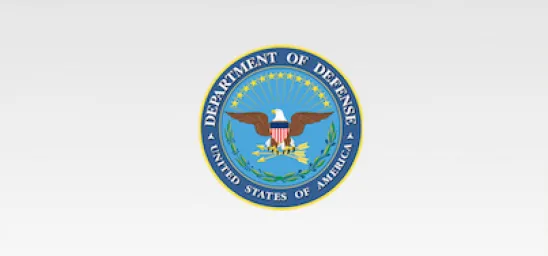The 2018 National Defense Authorization Act (“NDAA” or “Act”) includes changes that could make the Department of Defense (“DoD”) a more effective and knowledgeable purchaser of Intellectual Property (“IP”) and promote more flexible IP acquisition strategies. These same changes also could encourage Contracting Officers to insist on broader IP rights and delivery requirements. While it has always been important for contractors to protect their IP (click here for our list of “Top 10 Ways to Lose Rights in Your IP”), with the passage of the 2018 NDAA, avoiding the loss of valuable IP rights could require even more sophistication and vigilance.
Below is a summary of the 2018 NDAA provisions affecting IP rights and the potential impact of those provisions on defense contractors.
DoD IP Acquisition Practices
The 2018 NDAA establishes several new initiatives that will impact the DoD’s IP acquisition practices.
Section 802 of the Act requires the DoD to develop a uniform, DoD-wide policy on the acquisition or licensing of IP. The Act requires the policy to serve three purposes: (1) to enable coordination and consistency in strategies for acquiring or licensing IP and communicating with industry; (2) to ensure program managers are aware of the rights afforded to the Government and contractors in IP and that program managers consider and use all available techniques and best practices for acquiring or licensing IP early in the acquisition process; and (3) to encourage customized IP strategies for each system. Consistency, education, and flexibility are laudable goals. The risk for contractors, however, is that a new policy could result in demands for broader IP rights and more all-encompassing IP delivery requirements. That would certainly be consistent with recent trends, such as the emphasis on modular open systems architecture and the use of data rights as an evaluation factor to “encourage” contractors to relinquish greater IP rights than the applicable statutes and regulations require.
As to major weapons systems, Section 835 requires the DoD to negotiate a price for technical data to be delivered before selecting contractors for the engineering and manufacturing development or production of a system, and before granting Milestone B approval to initiate engineering and manufacturing development. Section 835 also includes a preference for specially negotiated licenses for technical data. These new provisions will apply to every major weapons systems beginning in January 2019.
The focus on customized IP strategies and specially negotiated licenses has the potential to benefit both the DoD and contractors. Specially negotiated license rights allow the parties to negotiate licenses that are tailored to the particular acquisition and sustainment strategy, rather than adopting the “one size fits all” approach associated with the standard data rights clauses. While the Defense Federal Acquisition Regulation Supplement has long authorized specially negotiated license rights, Contracting Officers can be reluctant to exercise their discretion to negotiate such licenses. The preference for specially negotiated licenses, combined with greater education regarding data rights, presents an opportunity to overcome that reluctance. But they also increase the risk that Contracting Officers could insist on non-standard license terms that extract greater data rights from contractors or that contain poorly drafted language that is not in the interest of either party. The best ways for contractors to mitigate these risks are to develop greater expertise in DoD data rights regulations and policies, to scrutinize each and every solicitation provision relating to IP, and to obtain legal review before agreeing to potentially unfavorable license terms.
DoD “Cadre” of Experts
Another one of the Act’s major reforms is Section 802’s creation of a “cadre of IP experts” to perform the following functions:
-
Interpret and provide counsel on IP laws/policies;
-
Advise and assist in developing acquisition strategies, product support strategies, and IP strategies;
-
Conduct or assist with financial analysis and valuation of IP;
-
Assist in drafting solicitations, contracts or other transactions;
-
Interact with contractors; and
-
Conduct or assist with mediation in the event a contractor delivers incomplete/noncompliant technical data.
The cadre will consist of both military personnel and civilian employees. Specifically, Section 802 establishes a preference for civilian employees of the DoD, rather than members of the armed forces, to maintain continuity in the cadre. In addition, the Act authorizes the Under Secretary to enter into a contract with a private-sector entity for specialized expertise to support the cadre. As with Section 802’s changes affecting policy, this cadre of experts has the potential to make the DoD a more effective and sophisticated purchaser of IP rights, but also a craftier and more demanding one as well, at contractors’ expense.
DoD Software Acquisition
The 2018 NDAA implements several new changes affecting how the DoD acquires software.
Section 871 imposes new requirements on negotiations for noncommercial software. In particular, it requires the DoD to consider during such negotiations acquiring all software and related materials necessary to (1) reproduce, build or recompile the software from original source code and required libraries; (2) conduct required software testing; and (3) deploy working computer software system binary files on relevant system hardware. Section 871 also provides that such software and related materials should also (1) include computer software delivered in useable, digital format; (2) not rely on external or additional software code or data; and (3) include sufficient documentation to support maintenance and understanding of interfaces and software revision history.
Section 871 will likely result in more expansive software delivery requirements, including more frequent demands for the delivery of source code and requirements for more detailed computer software documentation. Because these requirements will be limited to non-commercial computer software, contractors can mitigate the resulting risk by establishing that their software is commercial or by incorporating commercial computer software or segregable commercial computer software modules into their systems.
Section 872 requires the DoD to commission a study by the Defense Innovation Board for recommendations for legislative or other approaches to optimize software acquisition. The Board must submit an interim report of the findings of their study within 150 days after enactment of the Act and a final report due approximately one year hence.
New Pilot Programs
Sections 873 through 875 of the 2018 NDAA establish several new pilot programs for software acquisition. Section 873 creates a pilot program for major software-intensive warfighting and defense business systems designed to tailor or simplify software development requirements and methods through the use of “agile or iterative development methods.” These are defined as acquisition methods for delivering multiple, rapid, incremental capabilities to the user for operational use, evaluation and feedback not exclusively linked to any single, proprietary method or process and that involve breaking down procurements into smaller increments measured in weeks or months and continuous participation and collaboration by users, testers, and requirements authorities. Section 874 creates a similar pilot program for software development activities.
By calling for “agile or iterative development methods,” Congress seeks to address a concern that the DoD is behind other federal agencies and industry in implementing best practices for acquisition of software and information technologies. Accordingly, the use of these innovative commercial methods in the pilot programs is designed to assist the DoD to better adapt to ever-changing technology and mission needs.
Finally, Section 875 requires the DoD to implement the open source pilot program established by OMB Memorandum M-16-21, which requires each participating agency to release as open source software at least 20% of any new custom-developed code each year. By initiating this pilot program, the Act seeks to fulfill the higher-level purposes of the OMB Memorandum, which are promoting reuse of federal contractor and employee custom-developed code, and improving the quality of such software through public participation.
Conclusion
The 2018 NDAA will make the DoD a more effective purchaser of IP by fostering a consistent DoD-wide IP policy, encouraging more flexible licensing arrangements, and creating a cadre of experts to identify better IP acquisition strategies. On the other hand, it also has the potential to encourage the acquisition of significantly broader license rights and data delivery requirements. Contractors can mitigate these risks by becoming immersed in DoD data rights regulations and policy, by proposing creative specially negotiated licenses that benefit the DoD while still protecting contractors’ interests, and by obtaining skilled contracts or legal review before agreeing to potentially unfavorable IP license terms or delivery requirements.




 />i
/>i

